L3&4 - Cardiac system
1/93
There's no tags or description
Looks like no tags are added yet.
Name | Mastery | Learn | Test | Matching | Spaced |
|---|
No study sessions yet.
94 Terms
Heart location
Located slightly to the left in the chest cavity
Artery
Blood vessels that transports oxygenated blood under high pressure away from the heart towards distal tissues and extremities
Vein
Blood vessels which transports deoxygenated blood under low pressure away from the distal tissues/extremities and towards the heart
Left lung
is slightly longer and narrow to accommodate the cardiac notch
Four key areas of the heart
Right and Left atrium, Right and left Ventricle
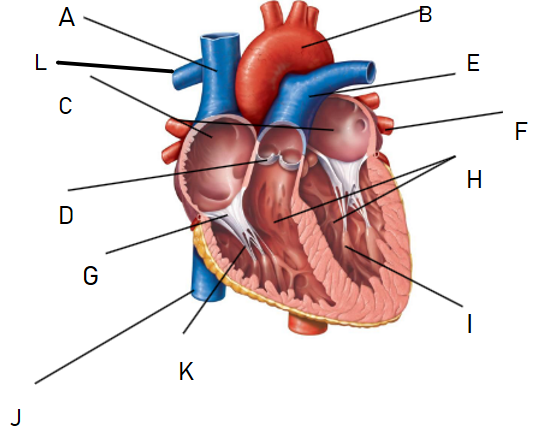
A
Superior Vena Cava - largest vein in the body that carries oxygen-poor blood into the right atrium from the upper parts of the body
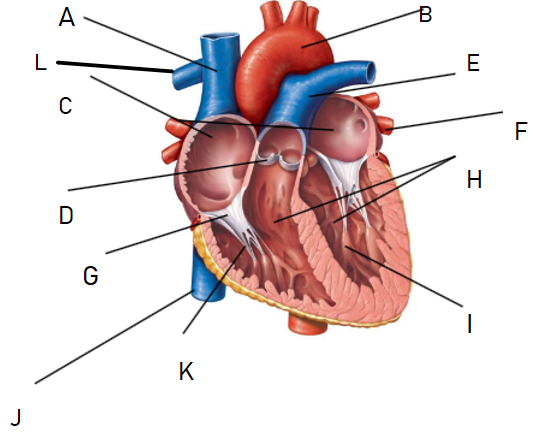
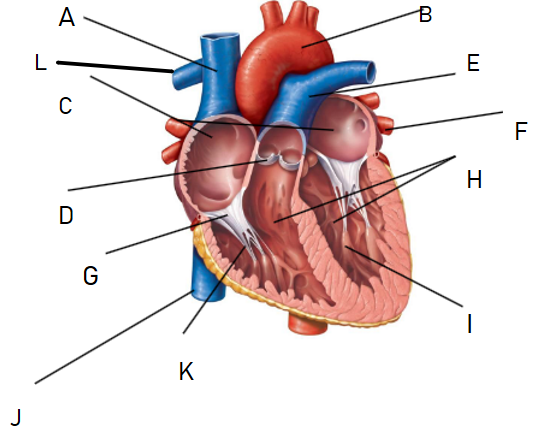
J
Inferior Vena Cava - largest vein in the body that carries oxygen-poor blood into the right atrium of the heart from lower parts of the body
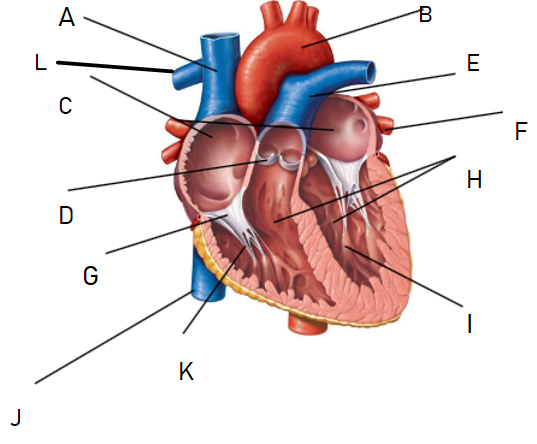
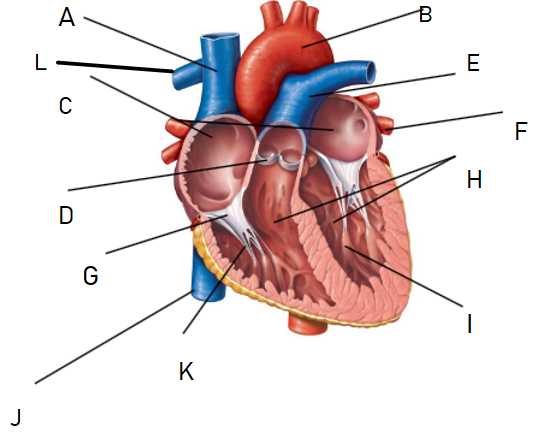
E
Left Pulmonary Artery
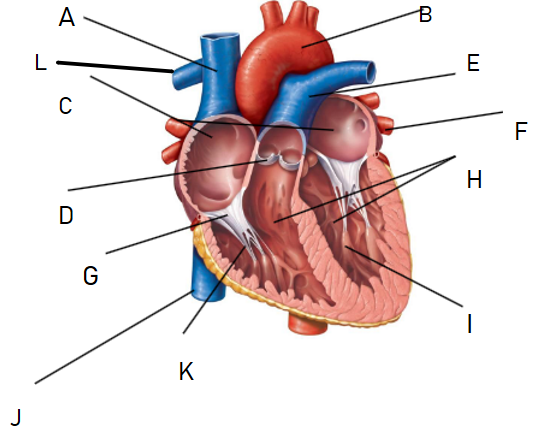
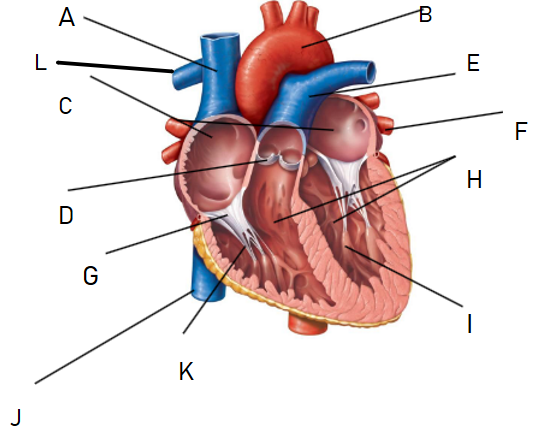
L
Right Pulmonary Artery
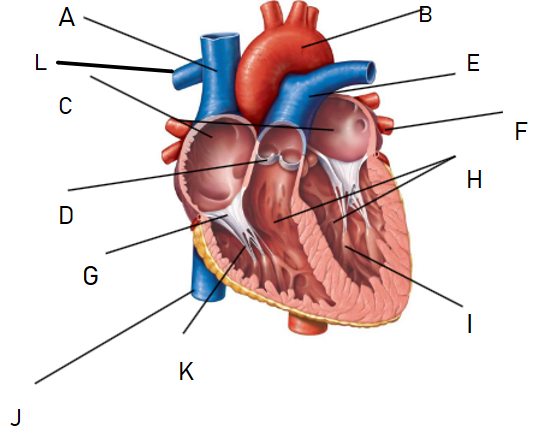
Pulmonary Artery
blood vessels that carry oxygen-poor blood from the right side of the heart to the lungs for oxygenation
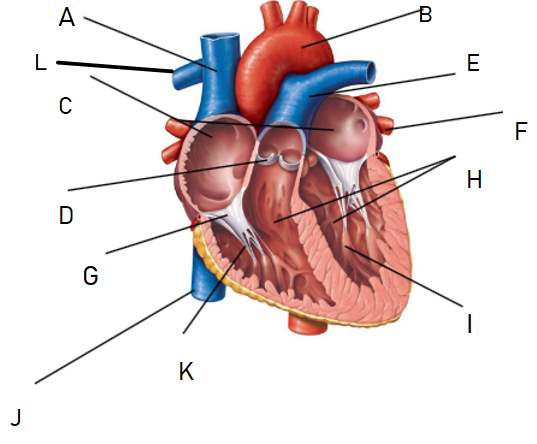
B
Aorta - the biggest and largest artery of the body that carries oxygen-rich blood from the left ventricle of the heart to the body
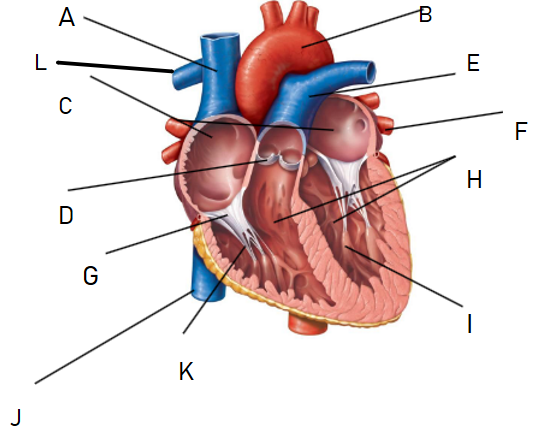
Septum
the muscular wall that separates the left and right sides of the heart
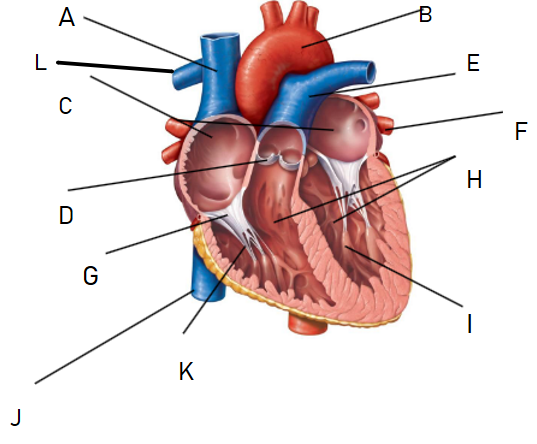
C
Right and Left Atrium
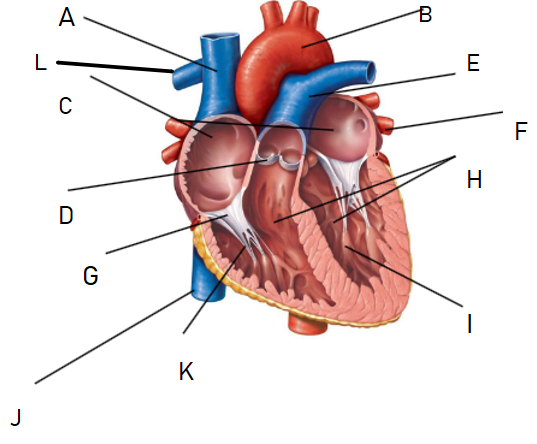
Left Atrium
the upper left chamber of the heart that receives oxygen-rich blood from the lungs via the pulmonary veins before pumping it to the left ventricle
Right Atrium
the upper right chamber of the heart that receives oxygen-poor blood from the body through the inferior and superior vena cava
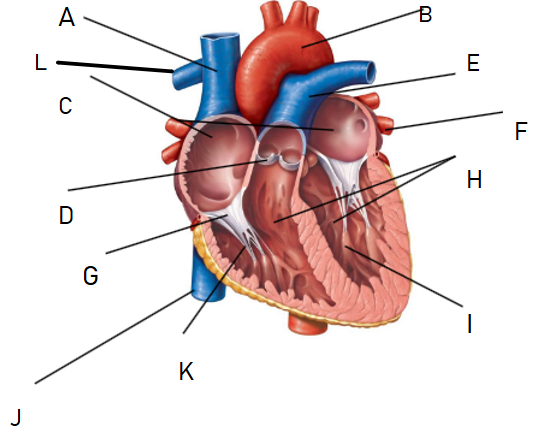
D
Pulmonary Valve - the flaps that control the flow of blood between the right ventricle and the pulmonary artery
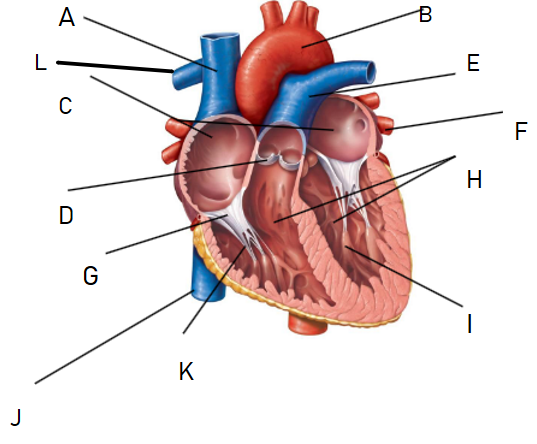
What happens when the ventricle contracts
the pulmonary valve opens allowing blood to pass into the pulmonary artery
What happens when the ventricle relaxes
the pulmonary valve closes preventing the back flow of blood from the pulmonary artery to the right ventricle
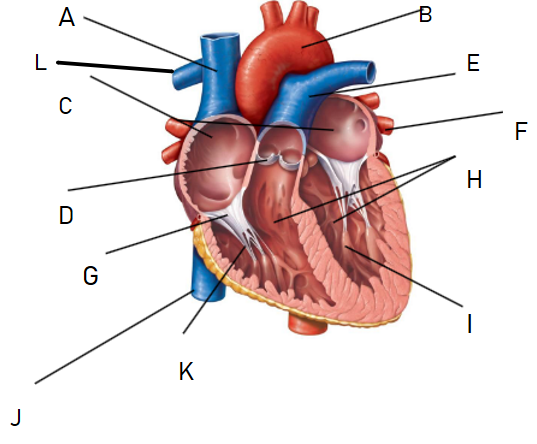
F
Left Pulmonary Veins
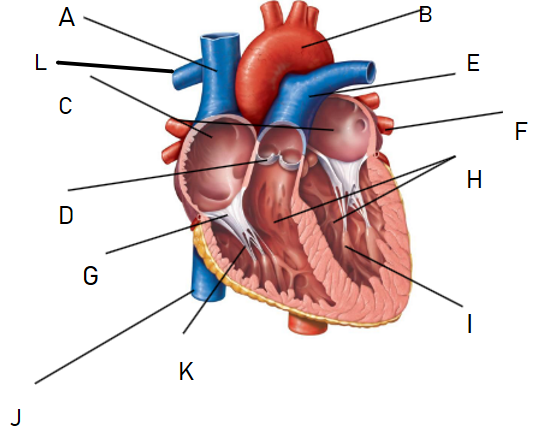
Pulmonary Vein
the blood vessel that carries oxygen-rich blood from the right ventricle of the heart to the lungs
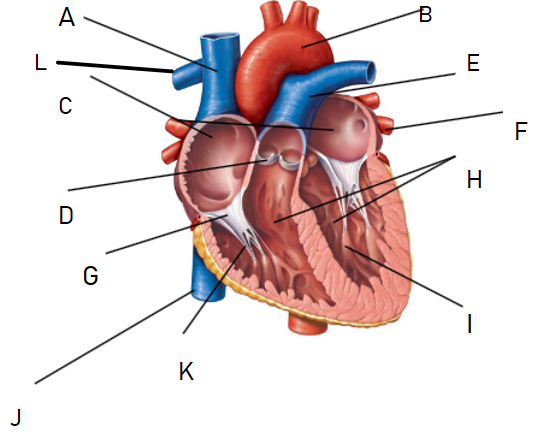
H
Right and left ventricles
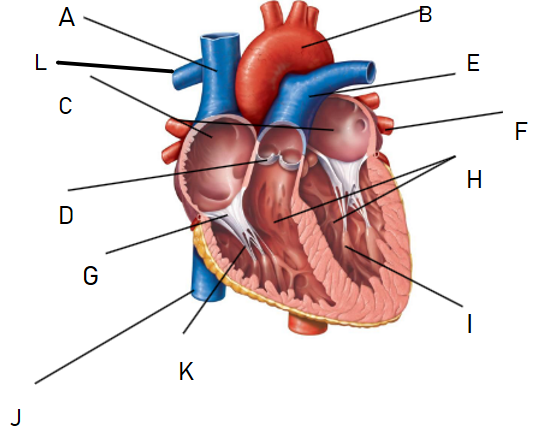
Left Ventricle
the thickest and lower chamber of the heart that pumps blood through the aortic valve into the aorta
Right Ventricle
the right lower chamber of the heart that pumps blood into the pulmonary artery
Two parts of the Pericardium
Fibrous Pericardium, Parietal layer of serous Pericardium
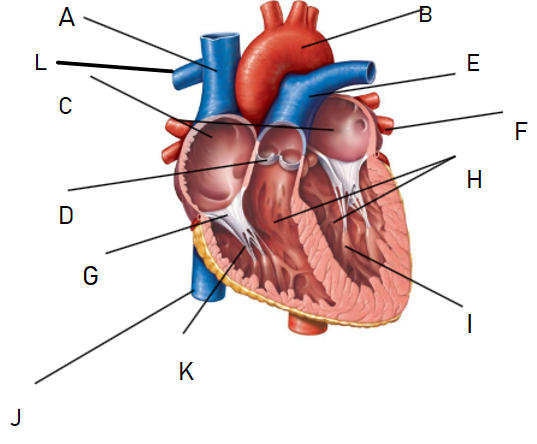
I
Papillary Muscles - extensions of the myocardium in the ventricles to which the chordae tendineae attach
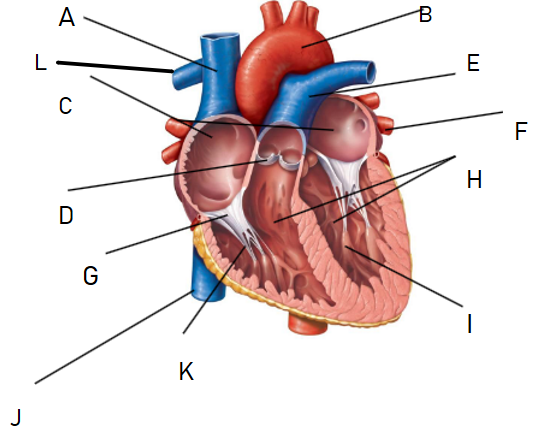
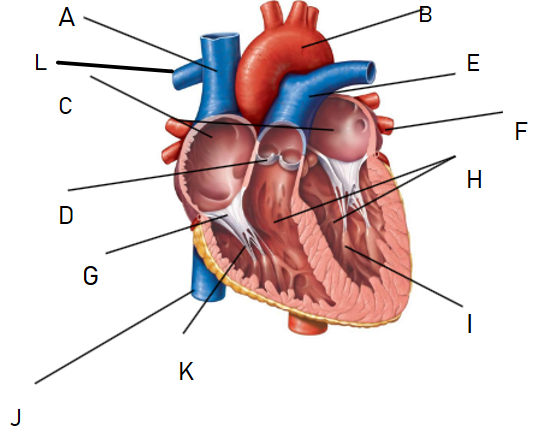
K
Chordae Tendineae - string-like extensions of tough connective tissue that extend from the flaps of the tricuspid (atrioventricular) valves to the by papillary muscles
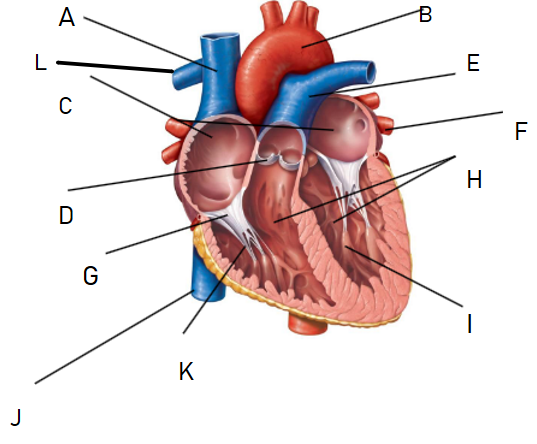
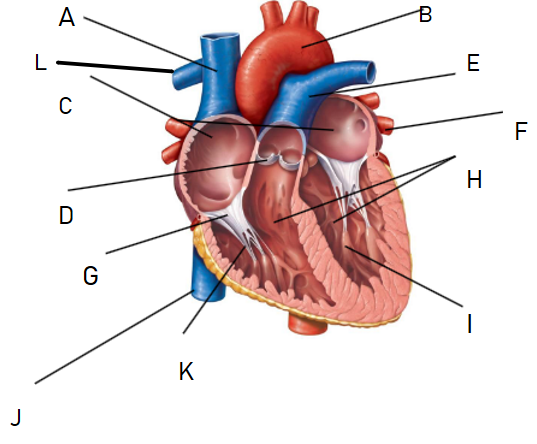
G
Tricuspid/Right atrioventricular valve - the flaps between the right atrium and the right ventricle composed of three leaf-like parts and prevents the backflow of blood from the ventricle to the atrium
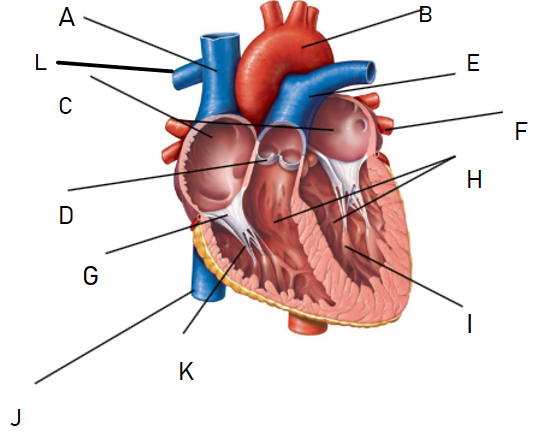
Tricuspid Valve
right atrioventricular valve
Bicuspid/Mitral Valve
left atrioventricular valve between the left atrium and the left ventricle that prevents the backflow of blood from the ventricle to the atrium
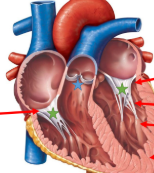
Blue star is Semi Luminar Valves (aortic and pulmonary)
valves located at the base of the pulmonary trunk and at the base of the aorta and stops backflow/too much blood from rushing into them (and therefore into the lungs/body)
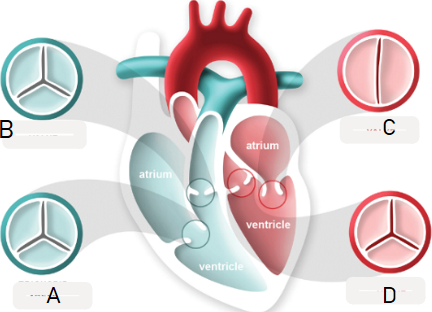
A
Tricuspid Valve (atrioventricular)
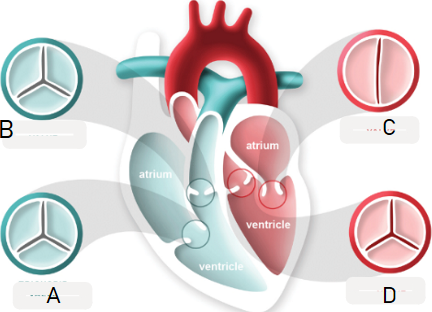
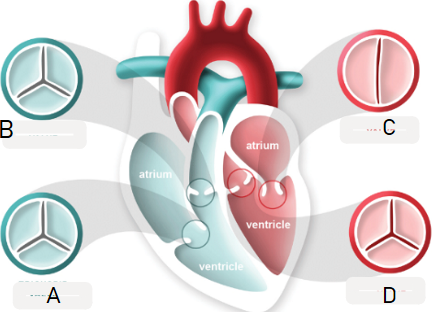
B
Pulmonary Valve
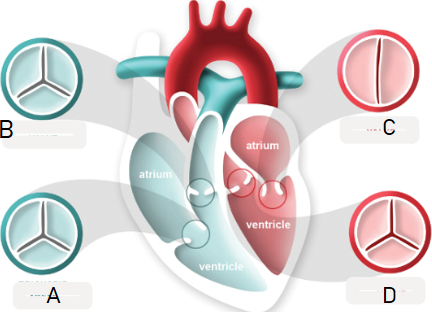
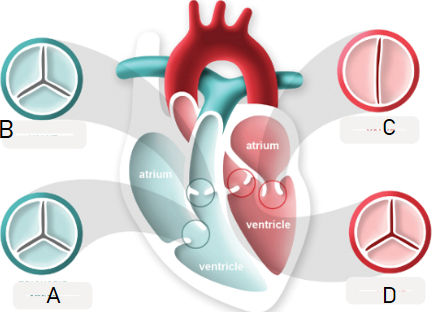
C
Mitral/Bicuspid Valve (atrioventricular)
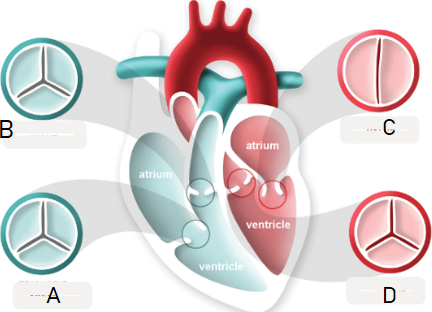
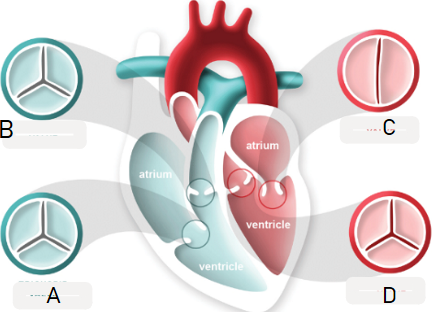
D
Aortic Valve
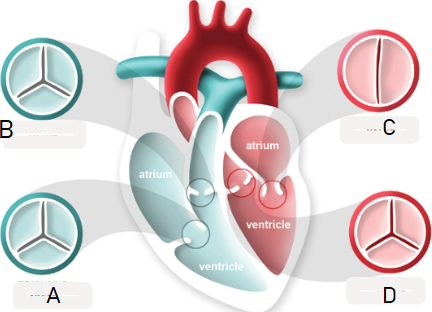
Low friction environment in heart
if this is not upheld it may cause heat, pain and eventually destruction of tissue of the heart
The main layers of the heart
endocardium, myocardium, epicardium, pericardium
Endocardium
the inner thin layer of the heart made of endothelial tissue which provides a smooth inner surface for the heart so there is minimal friction as blood moves through chamber
Myocardium
The largest and thickest layer of heart that is the middle layer made of cardiomyocytes (cardiac muscle cells) with the ability to contract, generate pressure and move blood around our cardiovascular system
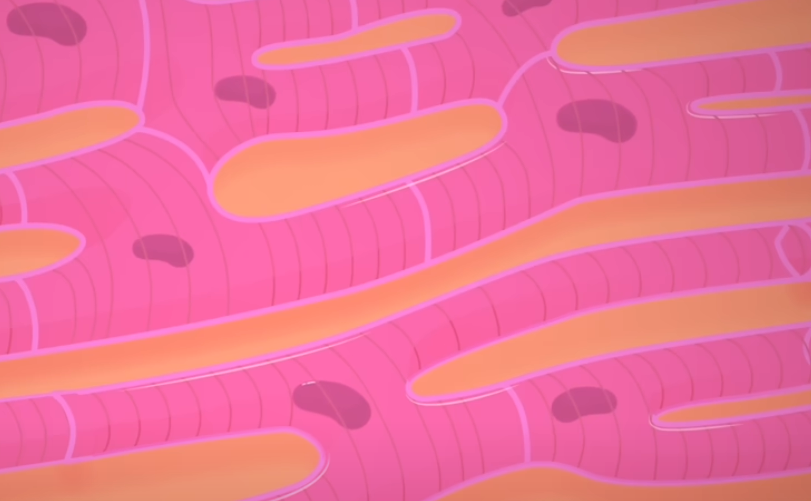
Cardiac Muscle Cells
striated cells with one nucleus and a branching structure that forms the walls of your heart, moving involuntarily its contractions send blood around the circulatory system
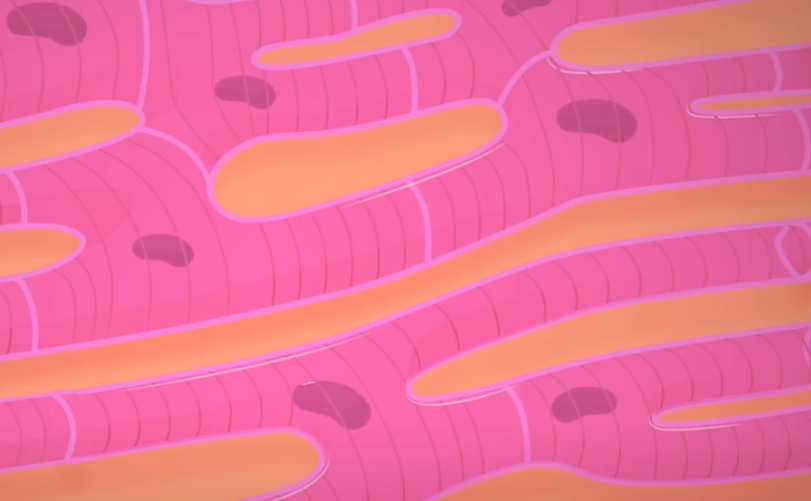
Epicardium
The dense, tough and protective outer layer of the heart made up of connective tissue also the inner layer of the pericardium
Mediastinal
adjective to describe anything related to the mediastinum which is the space in the chest between the lungs.
Pericardium/Pericardial Sac
the membrane that surrounds and protects the heart, separating it from other mediastinal structures and keeping it in place
Pericardium/Pericardial Sac function
it creates a sac around the heart that can fill with fluid in the pericardial cavity, creating lubrication between the outside wall of the heart and its external environment to avoid friction
Pericardial cavity
the cavity surrounding the heart filled with a lubricating seroud fluid that reduces friction as the heart contracts
Myocardial Infarction
a complete and sudden obstruction in blood flow to a coronary artery causing the death of an area of tissue due to interrupted blood supply, commonly known as a heart attack
Coronary Heart Disease
chronic condition when blockages of the coronary arteries happen over time
Journey of blood
Blood enters the right atrium heart through superior/inferior vena cava, then pumped down into right ventricle and out through the pulmonary artery to our lungs. Newly oxygenated blood is then pumped back to the heart through the pulmonary veins entering the left atrium and pushed down to the left ventricle, a high level of pressure is generated to force blood out through the aorta into the rest of the body’s systems
Valve Issues
Stenosis and Regurgitation
Stenosis
valves have become too stiff and do not properly open, causing resistance to blood flow in the cardiovascular system
Regurgitation
valves have become damaged and do not close properly allowing backflow of blood, limiting efficiency of system and can disrupt normal blood flow
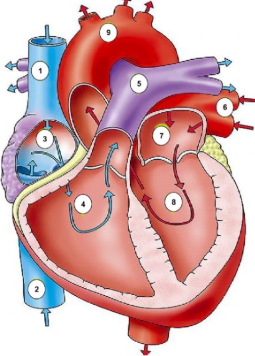
1-5
Pulmonary circuit
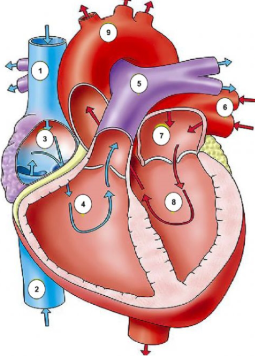
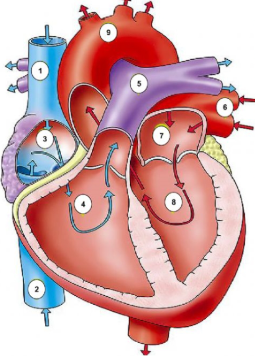
6-10
Systemic circuit
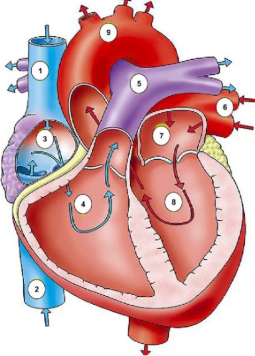
Blood pressure
the force on the blood vessels walls by the blood within them
Blood is under higher pressure
when blood is leaving the heart through arteries as necessary as blood is being forced further through the body
Blood is under lower pressure
when blood returns to the heart in veins
Pulse variations
regular, irregular, regularly irregular
Character
how strong the pulse is e.g. high/low volume, weak/thready
Cardiac cycle
period of time between the onset of atrial contraction (atrial systole) and ventricular relaxation (ventricular diastole)
Systole
period of time when the heart muscle is contracting
Diastole
period of time when the heart muscle is relaxed and the chambers fill with blood
Cardiac output
volume of blood pumped out of the ventricles per minute (heart rate x stroke volume)
Stroke Volume
the volume of blood ejected from the left ventricle per beat
Factors affecting the stroke volume
contractility; preload; afterload
Contractility
the strength of the myocardial contraction at any given preload - increased by things like exercise
Example of Vascular occlusive disease
Peripheral Arterial Disease (PAD)
PAD
caused by fatty plaque build up in arteries narrowing them and reducing blood flow affecting the contractility of the heart
Stroke volumes relationship with contractility
increasing contractility increases stroke volume
Preload (end diastolic volume)
the degree of stretch of the ventricles before it contracts
Cause of preload
blood returning to and filling the heart - the more the heart fills with blood in the diastole the greater the contractile force in systole
Preload relationship with stroke volume
increased preload increases stroke volume
Afterload
the pressure that must be exceeded before ejection of blood from the ventricles can occur
Relationship between afterload and stroke volume
increase in afterload decreases the stroke volume
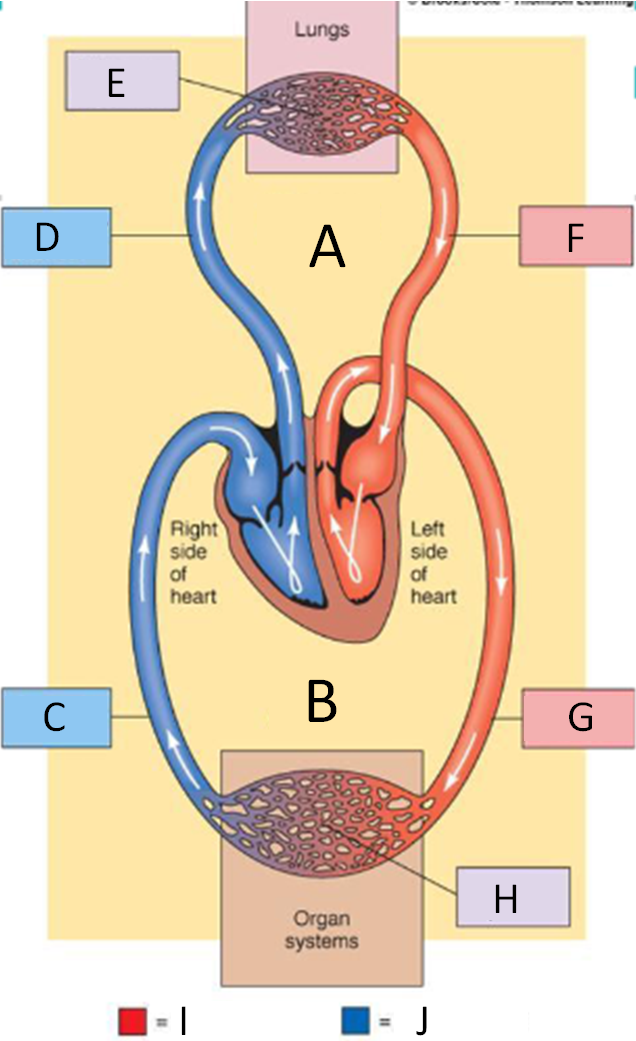
A
Pulmonary Circulation
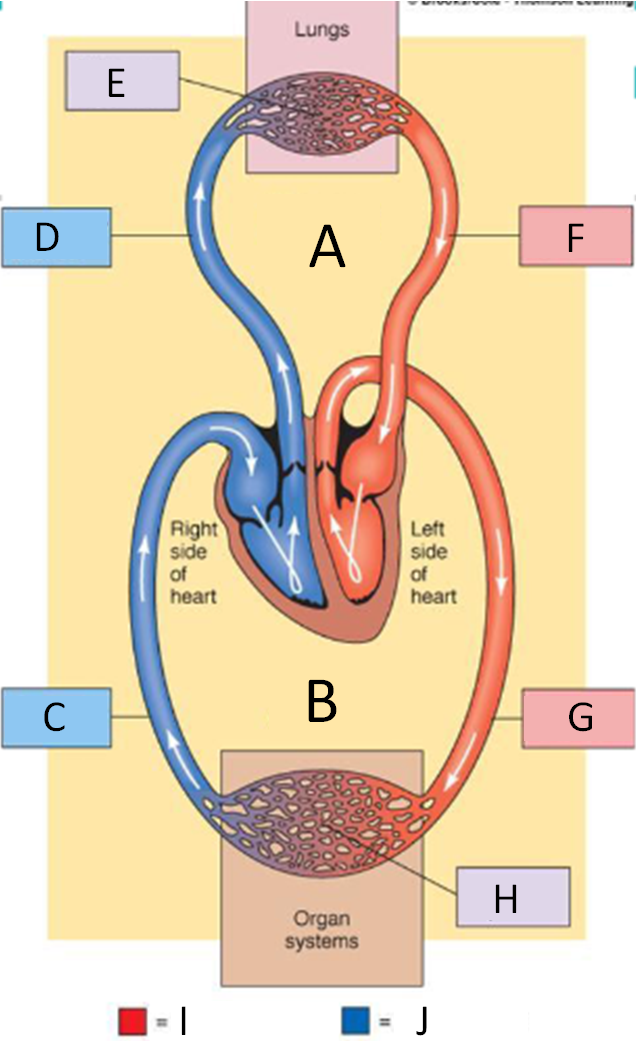
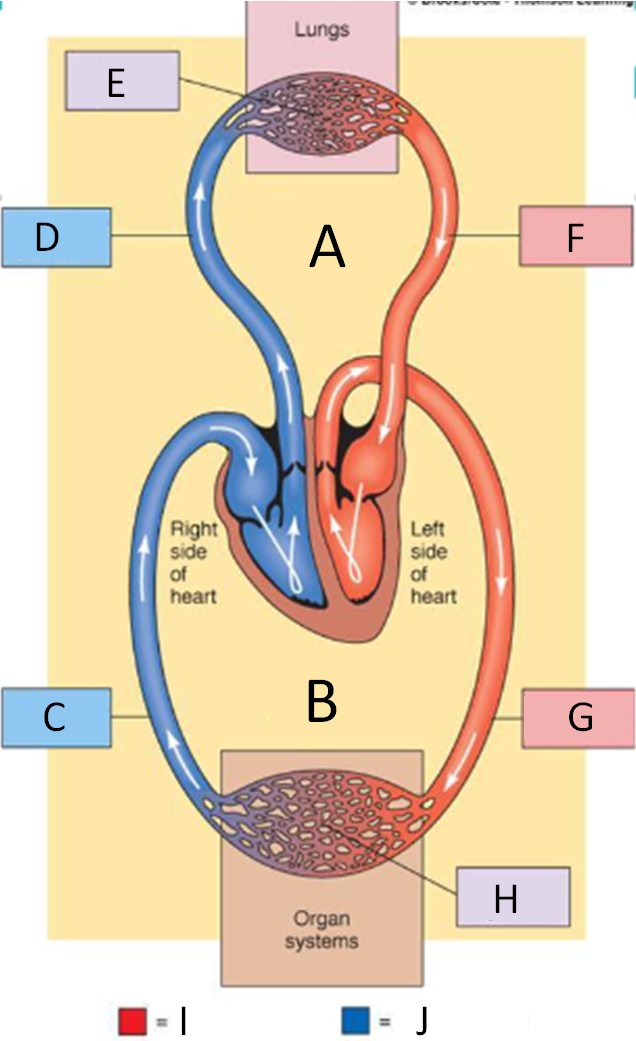
B
Systemic Circulation
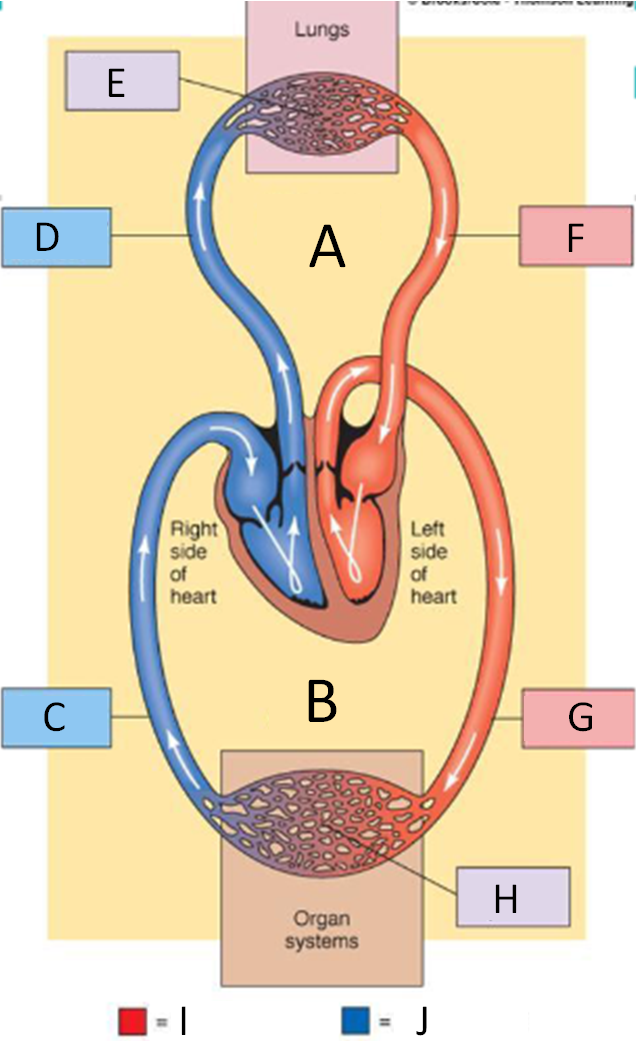
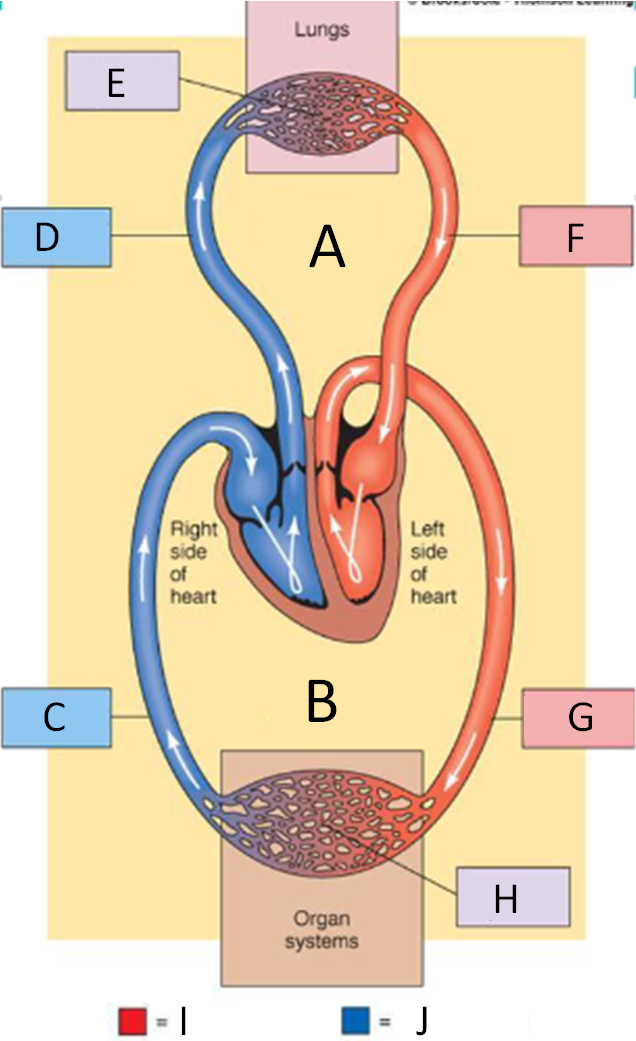
C
Systemic Veins
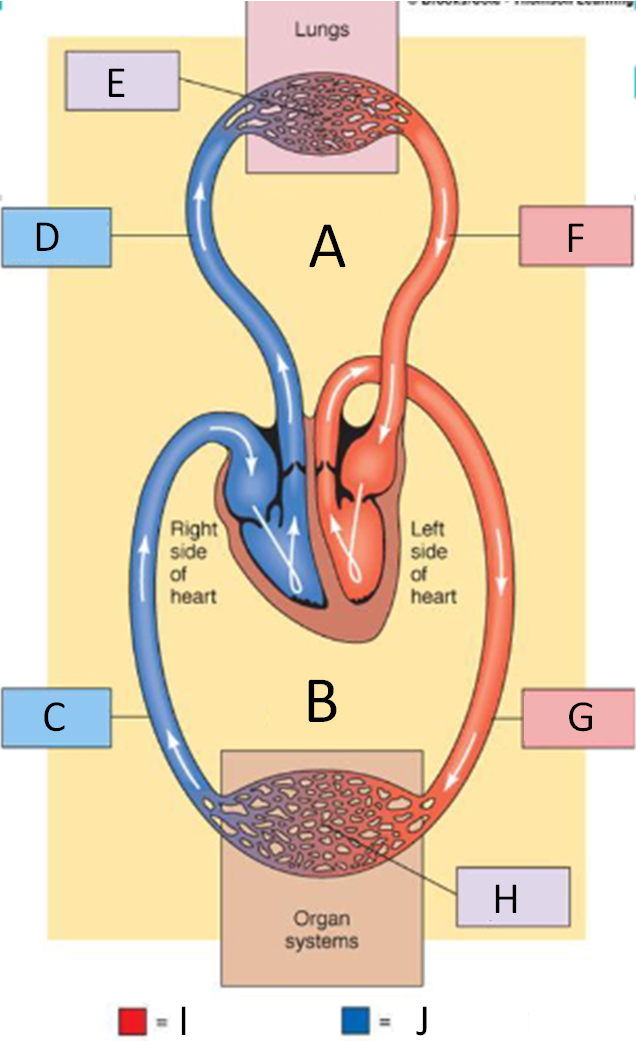
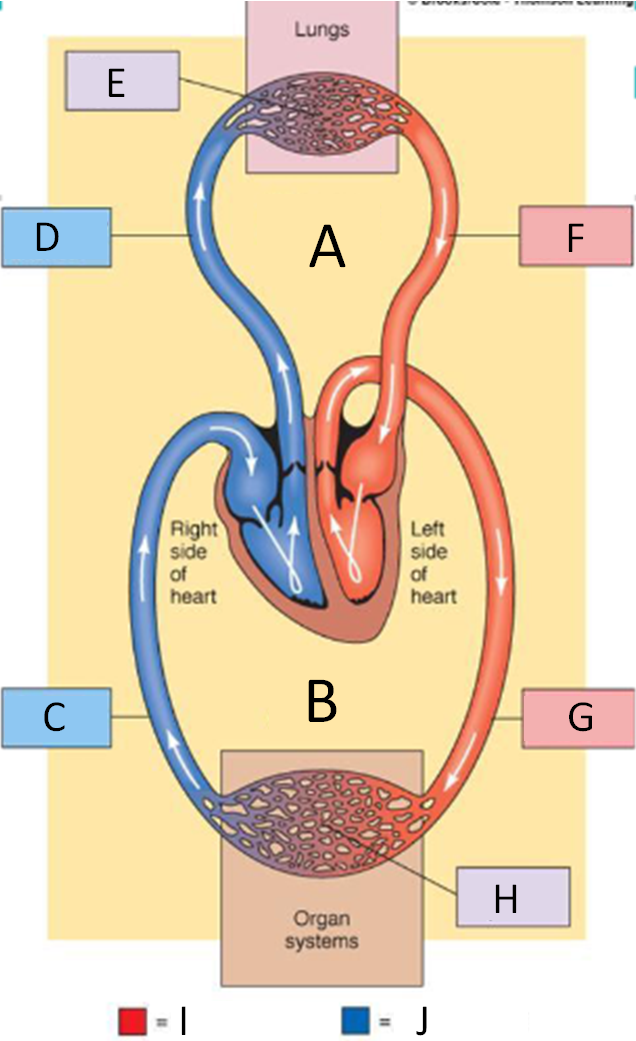
D
Pulmonary Arteries
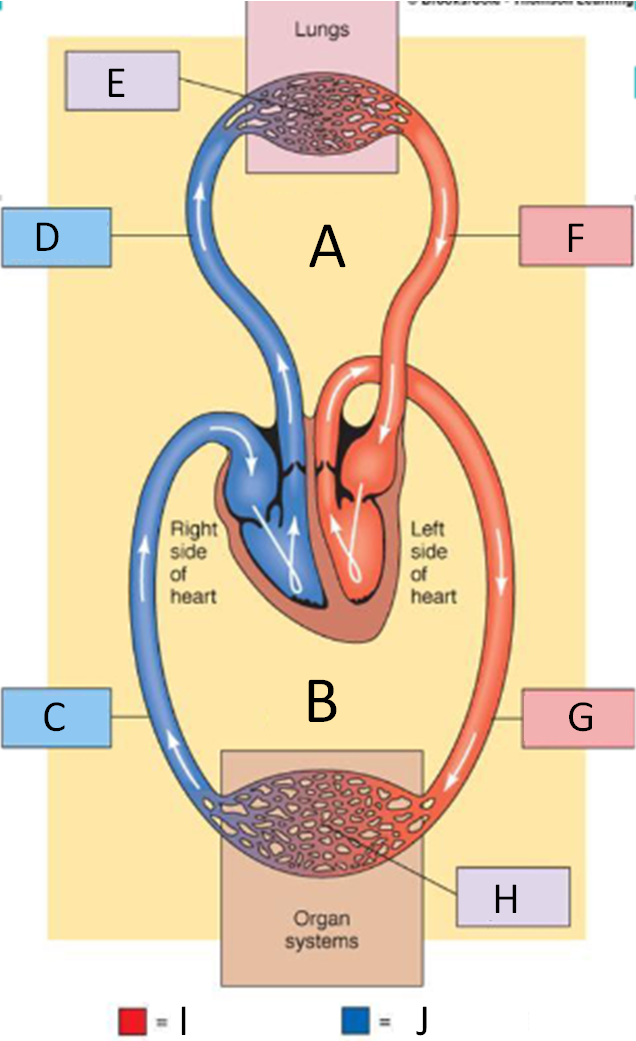
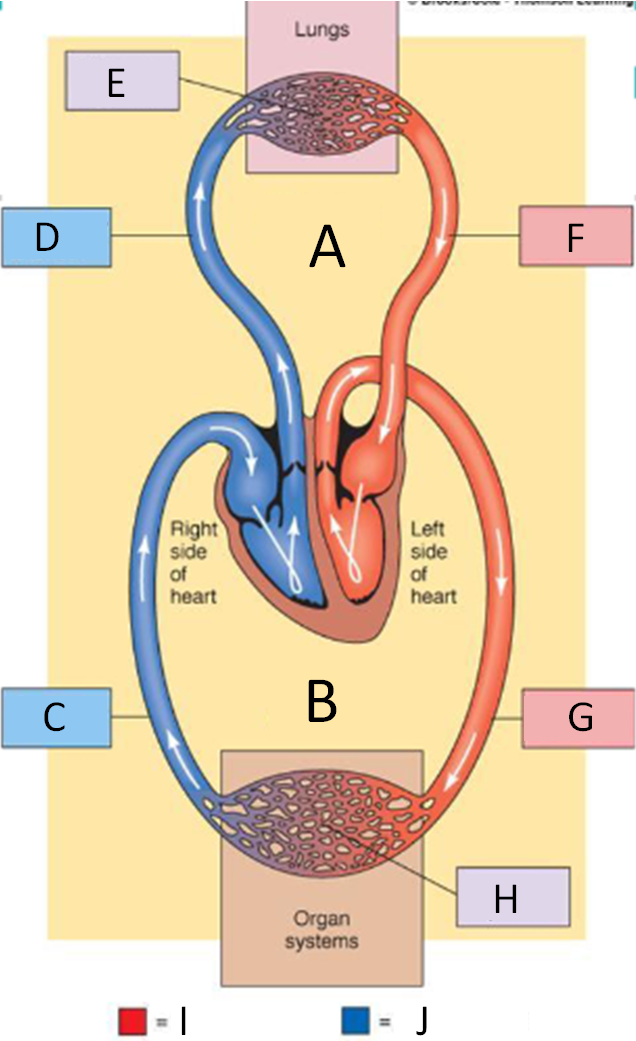
E
Pulmonary capillaries
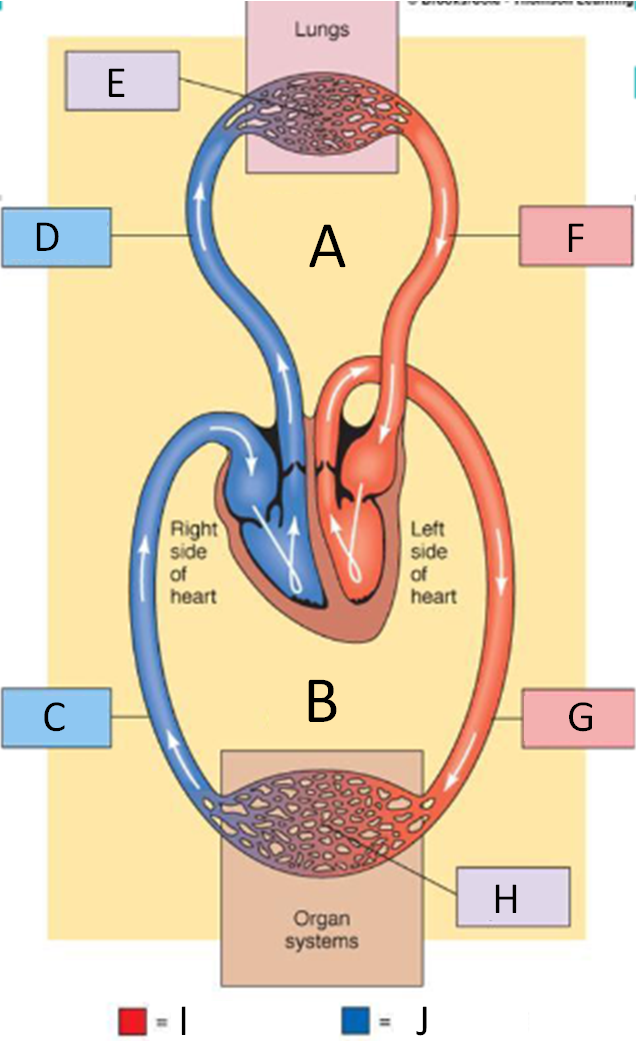
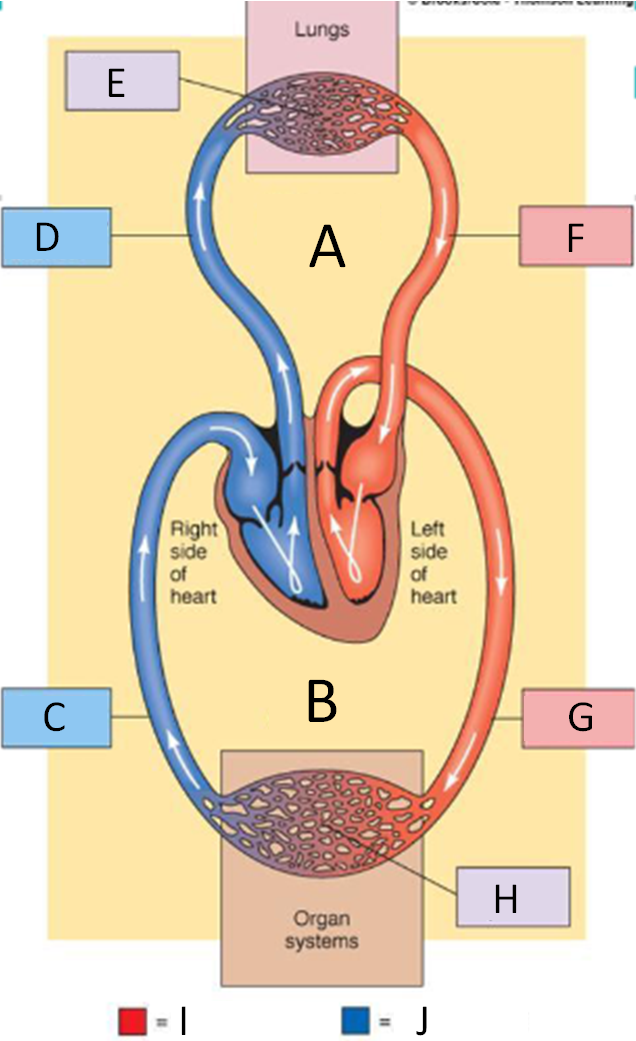
F
Pulmonary veins
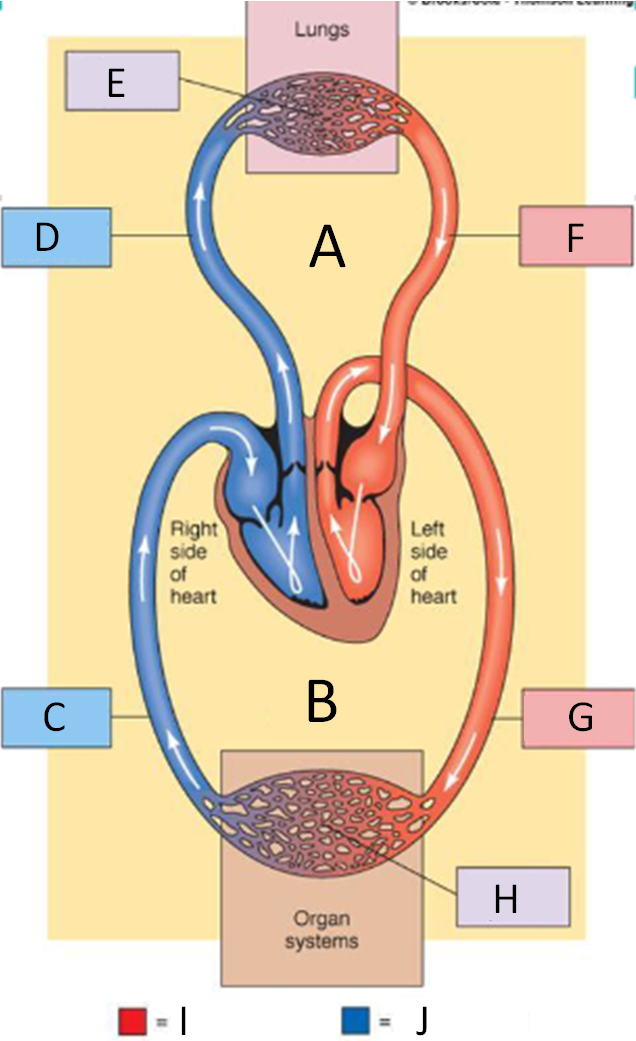
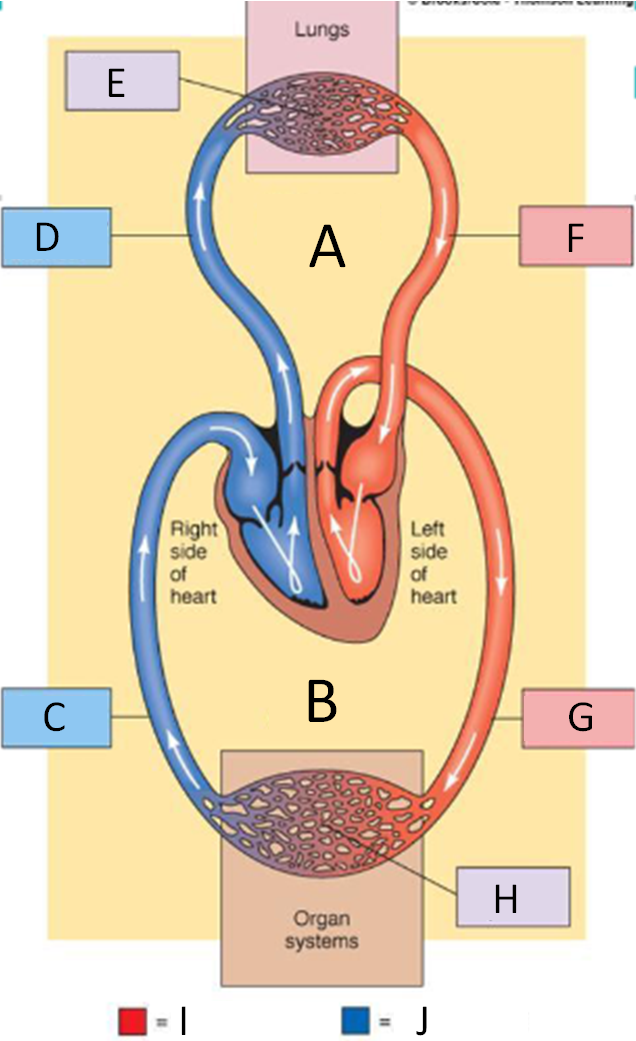
G
System arteries
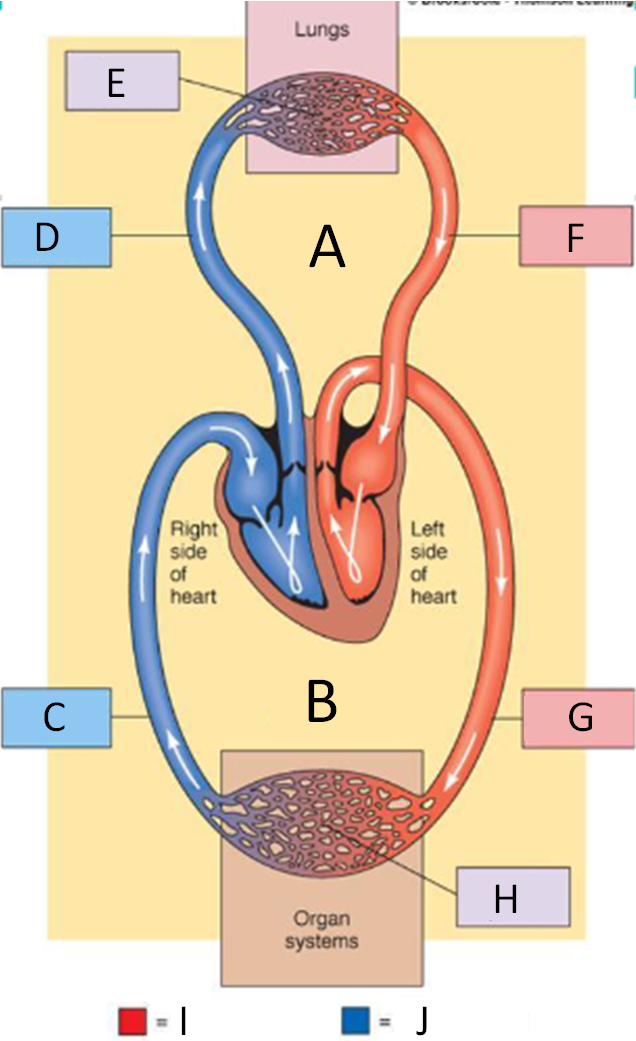
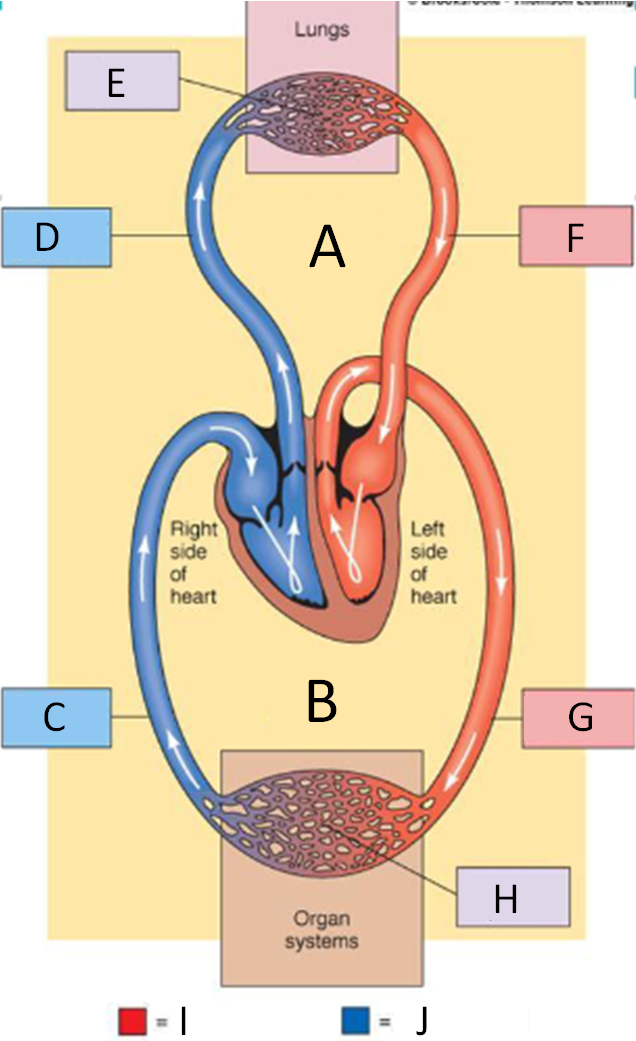
H
Systemic capillaries
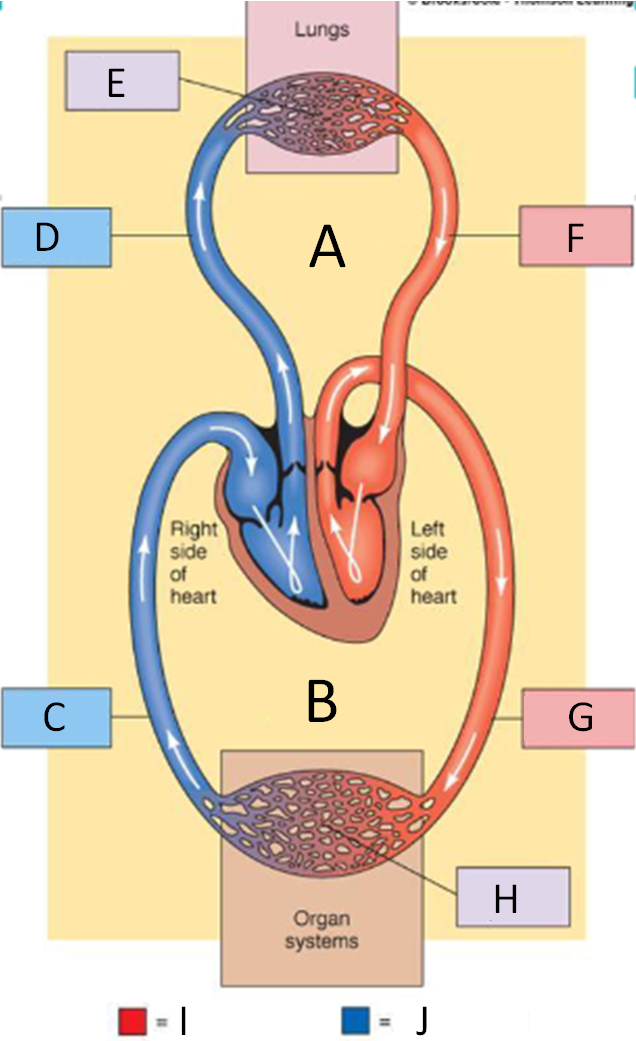
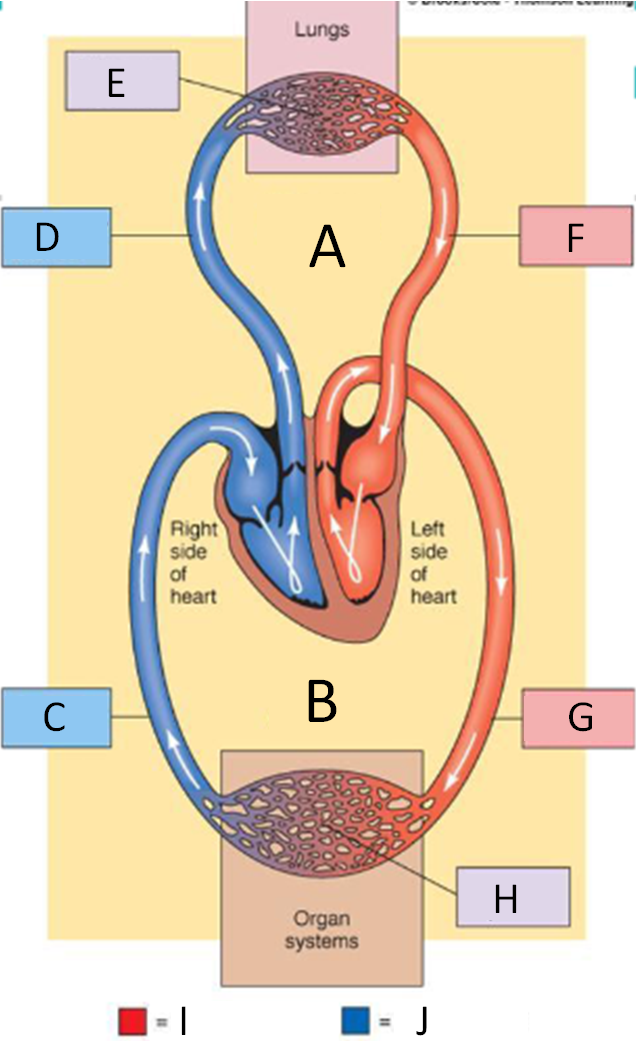
I
Oxygen rich blood
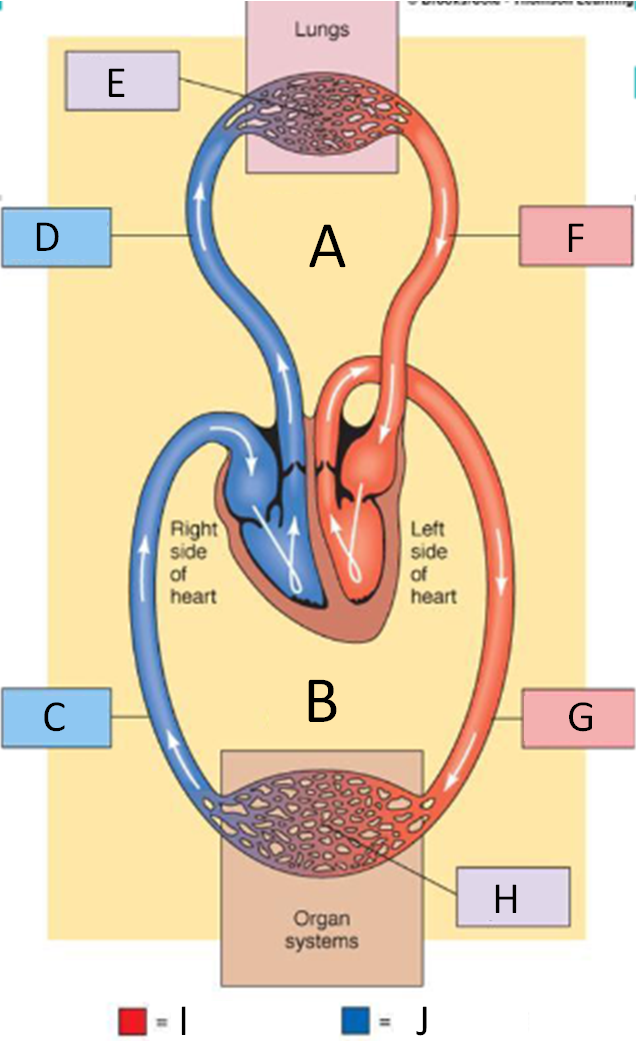
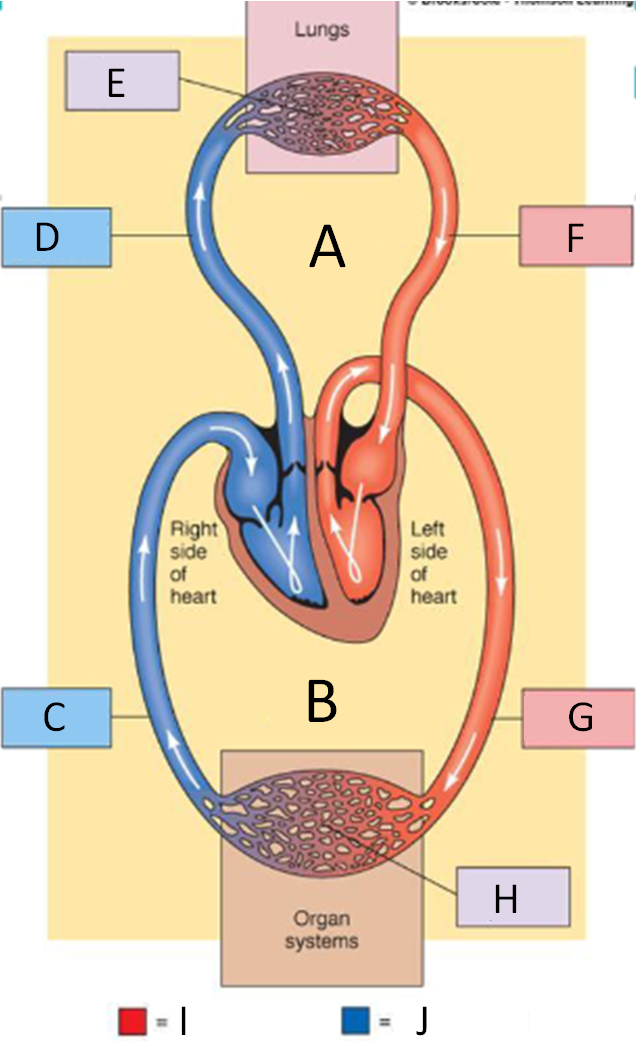
J
Oxygen poor blood
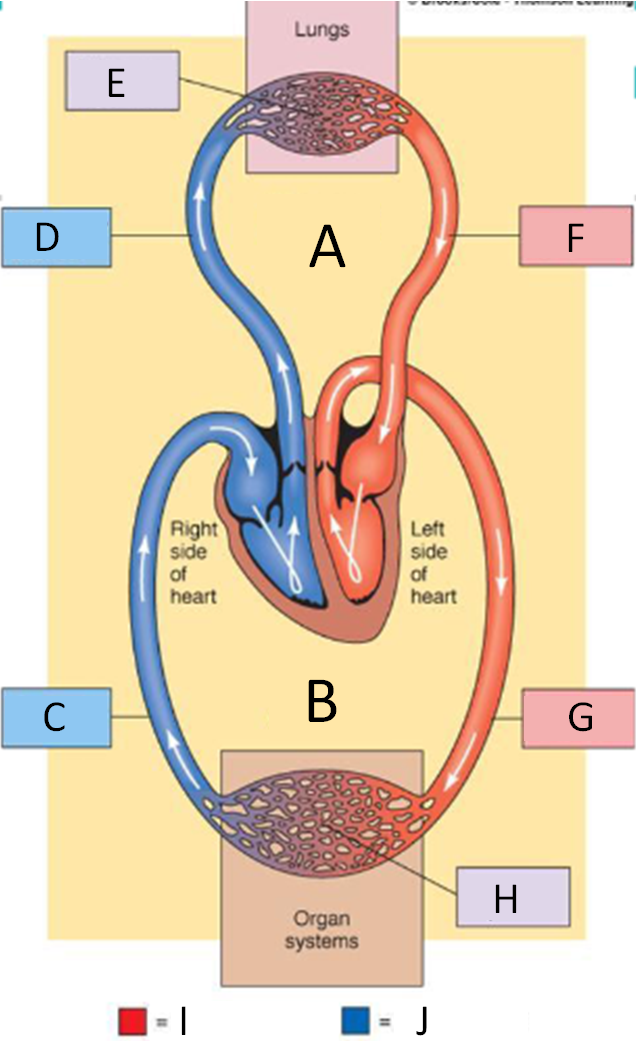
ECG
Electrocardiogram records the electrical activity of your heart to check its rhythm and rate
Depolarisation
when the heart cells send an electrical signal to contract
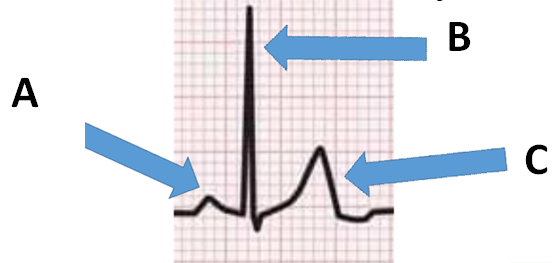
A
P-Wave - Sino-atrial node firing impulse (depolarisation)
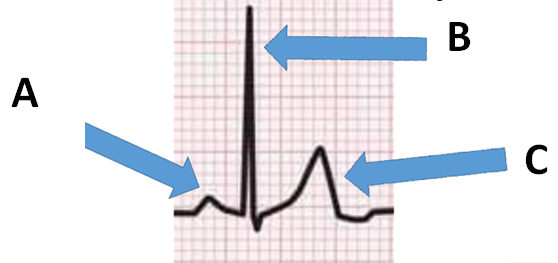
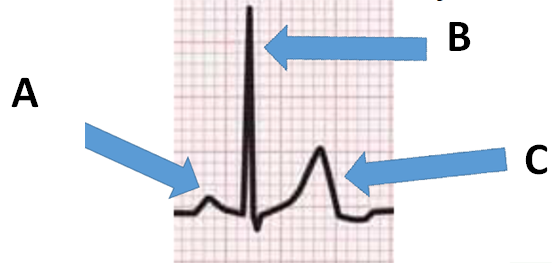
B
QRS Complex - Atrio-ventricular node firing impulse (depolarisation) right and left ventricle contracting but only left visible (systole)
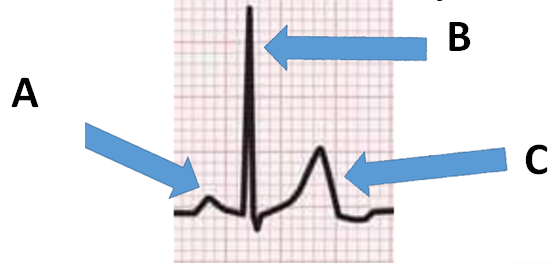
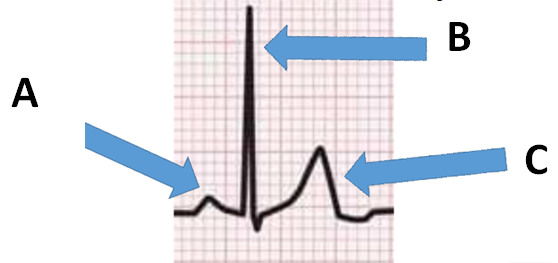
C
T-wave - ventricular repolarisation when the heart is refilling with blood and there are no electrical impulses (diastole)

VF
Ventricular Fibrillation - cardiac arrest with irregular uncoordinated rippling contractions of ventricles with no effective cardiac output

Potential side effects and treatment of ventricular fibrillation
loss of cerebral perfusion, unconsciousness and death treat by defibs (shock)

Atrial Fibrillation
a common arrythmia that means the heart rhythm is irregular/unsteady or rapid, common in adults and may alter a patients pulse

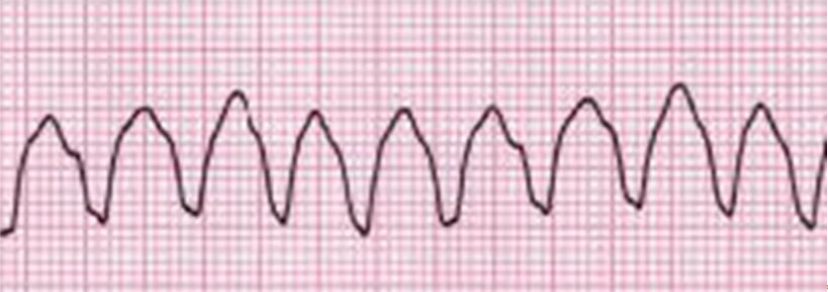
VT
Ventricular tachycardia - occurs when the lower chamber of the heart beats too fast to pump well and the body doesn't receive enough oxygenated blood
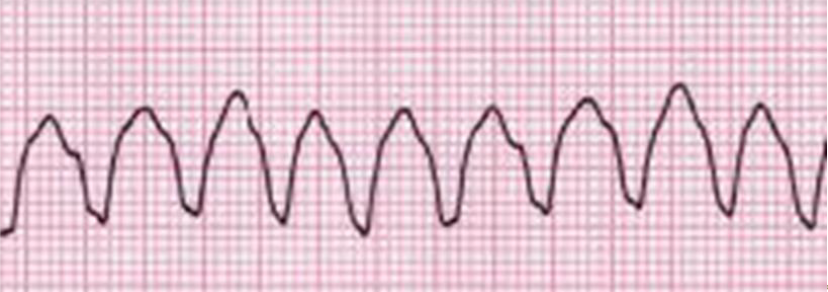
Pulseless Electrical Activity - (PEA)
cardiac arrest in which electrical activity is present but not strong enough to pump blood effectively around the body usually caused by hypoxia in which

Flat line
Asystole in which there is a sudden cardiac arrest and blood flow to organs stops - ROSC less likely to be achieved OHCA

ROSC
Return of spontaneous circulation